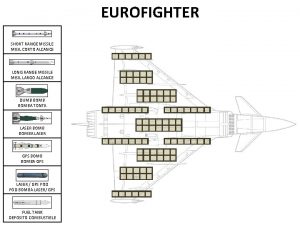Chapter 7 Long range and short range communication
























- Slides: 24

Chapter 7: Long range and short range communication networks

Wireless Local Area Networks (WLANs) � � � WLAN is a wireless network that links many devices within a limited area such as a home, school, university, or office building. WLANs give users the ability to move around within the local coverage area and still be connected to the network. Modern WLANs use Spread Spectrum or OFDM technology, under the IEEE 802. 11 standard, and are marked as Wi-Fi (Wireless Fidelity) brand name. First WLAN was ALOHAnet in 1971, using seven computers deployed over four islands to communicate with the central computer on Oahu Island. Wireless LANs use OFDM technology in the 2. 5 GHz and 5 GHz frequency bands to connect to the local access points, which in turn are connected to the large area networks.

Types of WLANs

Types of WLAN specifications � IEEE 802. 11 applies to WLANs and provides up to 2 Mbps transmission in the 2. 4 GHz band � IEEE 802. 11 a is an extension to 802. 11 WLANs and provides up to 54 -Mbps in the 5 GHz band � IEEE 802. 11 b (802. 11 High Rate or Wi-Fi) is an extension to 802. 11 WLANS and provides 11 Mbps � IEEE 802. 11 e — a wireless draft standard that defines the Quality of Service (Qos) support for LANs � IEEE 802. 11 g —WLAN transmission over short distances at up to 54 -Mbps in the 2. 4 GHz bands � IEEE 802. 11 n — builds upon 802. 11 standards by adding multiple-input multiple-output (MIMO) � IEEE 802. 11 ac improved 802. 11 data rate of 433 Mbps/stream, or 1. 3 Gbps in a 3 -antenna (3 - stream) � IEEE 802. 11 ad WLAN with operating frequency ~ 60 GHz and maximum data rate of 7 Gbps � IEEE 802. 11 r Fast Basic Service Set (BSS) enables Voice over Internet Protocol (VOIP) roaming on Wi-Fi � IEEE 802. 1 X is port-based Network Access Control that allows secure communication between transmission in the 2. 4 GHz band design authenticated and authorized devices.

Wi-Fi networks � � � � Wi-Fi Alliance was founded in 1999 Wi-Fi is defined as Wireless Local Area Network (WLAN) product based on the IEEE 802. 11 standard Many devices can use Wi-Fi, e. g. personal computers, video-game consoles, smartphones and digital cameras. WI-Fi devices can connect to a network resource such as the Internet via wireless access points (APs) with a range of about 20 meters indoors Wi-Fi usage has spread in university campuses, shopping malls, airports, and most public places. City-wide service started in the U. S. in 2005 with Sunnyvale, California being the first to offer free Wi-Fi has competition from local communication industry, which provides superior service at a reasonable cost.

Types of Wi-Fi networks � Infrastructure network is a wireless network configuration commonly used in home networks and hotspots � Data transferred between wireless devices on the network pass through a central access point (AP), such as a wireless network router � Ad Hoc network is a wireless network where data is transmitted directly between wireless devices on the network, without passing through an access point

Personal Area Networks (PANs) � PANs are computer networks that links devices such as computers, telephones and personal digital assistants � PANs can be used for communication among the personal devices within few meters of each other, or to connect to a higher level network and the Internet of wireless personal area networks (WPANs) include Bluetooth and Zigbee and are defined by the IEEE 802. 15 standard � Examples

Bluetooth � � � Bluetooth is a wireless technology standard that was invented by Ericsson in 1994 Bluetooth name originates from the tenth century king, Harald Bluetooth, who united the Scandinavian countries, just as our Bluetooth network connects all our wireless devices It is based on the IEEE 802. 15. 1 standard, and is managed by the Bluetooth Special Interest Group (SIG) Bluetooth uses FHSS technology in the ISM band of 2. 4 to 2. 485 GHz to connect devices such as keyboards, pointing devices, audio headsets, printers, PDAs, and cell phones. A Bluetooth PAN is also called a piconet (very small network) that typically has a range of 10 meters. Piconet usually connects 8 active devices in a master-slave relationship

Bluetooth transmission

Bluetooth reception

Applications of Bluetooth � Wireless communication between a mobile phone and a remote headset � Wireless communication between a mobile phone and a Bluetooth car stereo system. � Wireless communication with PC input and output devices, like mouse, keyboard and printer � GPS receivers, medical equipment, bar code scanners, and traffic control devices � Game consoles: Nintendo's Wii and Sony's Play. Station use Bluetooth for wireless controllers � Short range transmission of health sensor data from medical devices to mobile units � � Real-time location systems (RTLS) are used to track and identify the location of objects in realtime using Nodes or tags attached to, or embedded in the objects tracked Personal security application on mobile phones for prevention of theft or loss of items Data collected from travelers' Bluetooth devices is used to predict travel times and road congestion for motorists Wireless transmission of audio, as a more reliable alternative to FM transmitters

Zigbee � � � Zig. Bee is an open global PAN wireless system based on the IEEE 802. 15. 4 standard Zigbee name originates refers to the waggle dance of honey bees after their return to the beehive Since it is a low-power network, transmission distances are limited to 10– 100 meters Longer Zig. Bee range possible through a mesh network of repeater devices Zig. Bee operates in the Industrial, Scientific and Medical (ISM) radio bands: 2. 4 GHz in most jurisdictions worldwide; 784 MHz in China, 868 MHz in Europe and 915 MHz in the USA and Australia.

Applications of Zigbee � Sensing and location determination at disaster sites � Automotive sensing such as tire pressure monitoring � Agricultural sensing of soil moisture, pesticide, rain content � Home monitoring such as heating, air conditioning (HVAC) and � Consumer electronics such as remote controls for radio, TVs, � Wireless health monitoring such as sensors for vital functions � Zig. Bee Smart Energy to monitor and control the delivery and use security DVDs of energy and water.

Ultra Wideband (UWB) systems � Ultra-wideband (UWB) systems were pioneered by Robert A. Scholtz and others � A high frequency pulse conveys the information without the need for another sinusoidal carrier � 3 G or 4 G communications is carrier controlled and wideband (~ 100 MHz) � UWB system carrierless and wideband (~ 500 MHz). systems transmit information, using very narrow pulses enabling short-range gigabit-persecond communications systems.

FCC frequency mask of UWB systems

UWB transmission and reception

UWB modulation

UWB pulse generation

Potential advantages and disadvantages of UWB � Low cost, low power: simplementation � Low duty cycle operation � Potential for high capacity: high throughput � Large effective processing gain � Multipath resistant � Wireless internet connectivity issues � Pulse Synchronization issues � Susceptibility to interference � Short range (a few meters to a few km)

Applications of UWB � Imaging systems: medical, surveillance, ground penetrating radar � Operating range below 960 MHz or between 1. 99 and 10 GHz � Vehicular radar systems (above 24. 075 GHz) � Communications and measurements systems restricted to indoor networks or hand-held devices

Path loss calculations in long range and short range networks � � Path loss in a communication system is defined as the ratio of the transmitted power to the received power It is important to estimate path loss in wired or wireless networks for the following reasons: ◦ Transmitter parameters like power, frequency and bandwidth can be designed accurately to ensure that subscribers receive sufficient signal power to operate their communication devices ◦ Path loss can vary significantly depending on the channel; for example, a signal travelling over free space or through a fiber optic cable can be very predictable, as compared to a signal travelling within a building, or even through a city with many buildings.

Line of sight (LOS) model � Path loss (PL), magnitude, with antenna gains Gt, Gr � Path loss (PL), d. B

Practical channel models � Log-distance Path Loss model: ◦ Reference distance d 0 ◦ Path loss exponent n � Typical value of n ◦ Urban cellular radio in the range of n = 2. 7 -3. 5, ◦ In-building LOS in the lower range of n =1. 6 -1. 8

Link budget and range estimation in wireless links � Link budget LB � Receiver sensitivity Rs is the minimum signal power that the receiver can detect with acceptable SNR � Receiver sensitivity is analogous to Minimum Usable Level (MUL)
 Short short short long long long short short short
Short short short long long long short short short As compared to long-range forecasts, short-range forecasts
As compared to long-range forecasts, short-range forecasts Once upon a time there was a little red fox
Once upon a time there was a little red fox Short range communication
Short range communication Props in tinikling
Props in tinikling Long long ago when the gods and goddesses
Long long ago when the gods and goddesses Long run equilibrium under perfect competition
Long run equilibrium under perfect competition Short division vs long division
Short division vs long division Short wave vs long wave radiation
Short wave vs long wave radiation Short term planning and long term planning
Short term planning and long term planning Short case vs long case
Short case vs long case Example of short term human resources
Example of short term human resources Short futures hedge
Short futures hedge Difference between long term and short term liabilities
Difference between long term and short term liabilities Repeated subtraction for division
Repeated subtraction for division Short and long answers
Short and long answers Slenderness ratio of column
Slenderness ratio of column Long term liabilities
Long term liabilities Long run market supply curve
Long run market supply curve Foot in poetry definition
Foot in poetry definition Comparative adjectives
Comparative adjectives Short and long vowels rules
Short and long vowels rules Long and short adjectives
Long and short adjectives Long and short adjectives
Long and short adjectives Giraffe syllables
Giraffe syllables











































